The experience in the new Musée royal des Beaux-Arts d’Anvers, which reopened its doors to the city last September 24, already begins outside, in the silent public garden, an antechamber populated with statues that anticipate what the visitor will see this crossed the threshold wunderkammer polite that stretches from the beginning of the fourteenth century to today, in a path to be enjoyed without haste.
The wonder effect lights up once you enter the monumental entrance with the double staircase that accompanies towards the great masters. For the more traditionalist visitors, it will be enough to disengage from the expectation of chronological set-up, and here the new Koninklijk Museum voor Schone Kunsten will really show to all those who return to visit it after 11 years of closure and restoration, by the Dutch studio KAAN Architecten, his surprising face of the art treasure chest of the future.
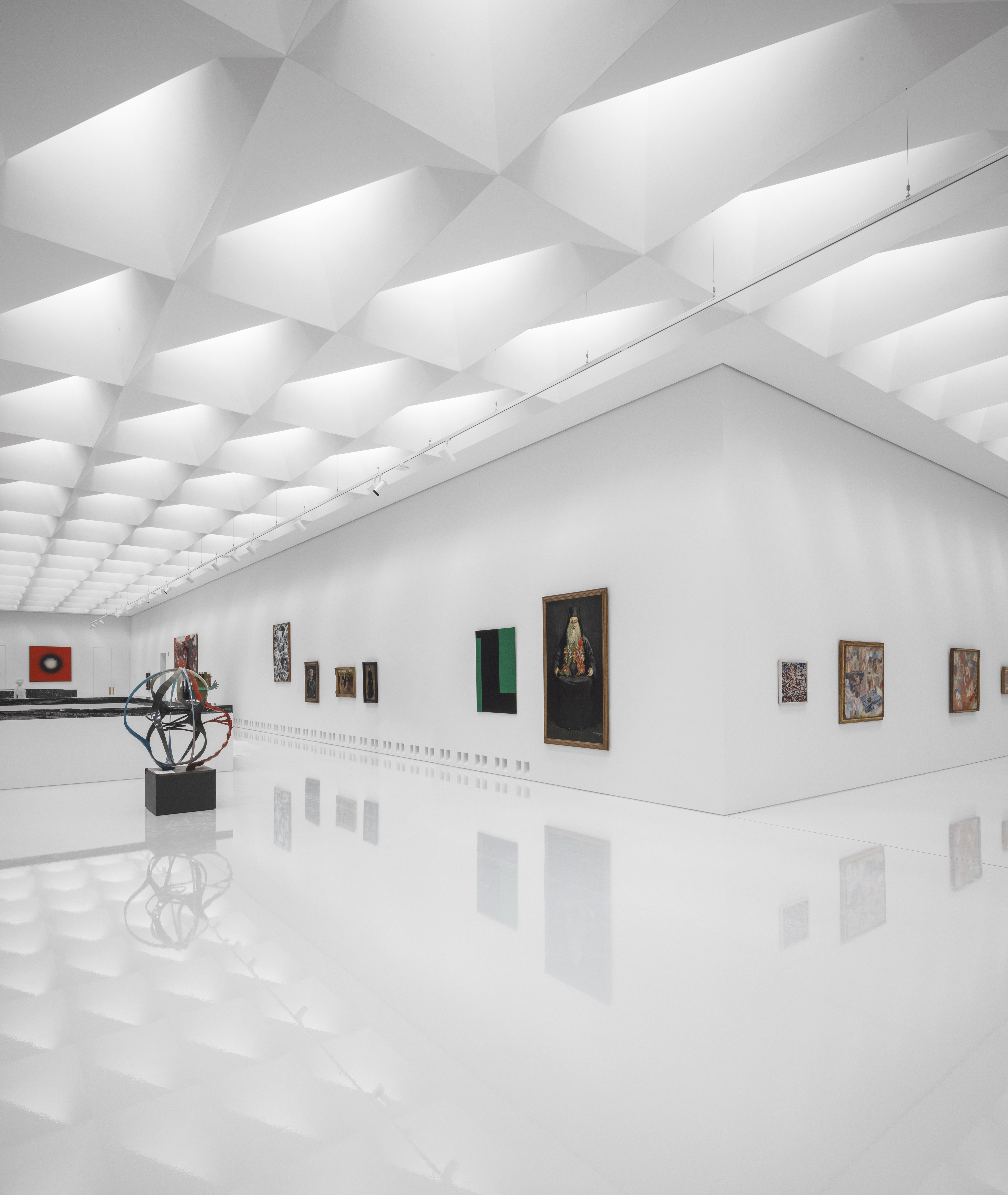
KMSKA | Photo: © Karin Borghouts
The largest collection in Flanders
Thus entering the largest and richest collection in Flanders, with its 8400 objects, of which over 650 are exhibited, it could happen, for example, in the room dedicated to Sufferingto see the Calvary by Antonello da Messina in dialogue with The Man of Sorrows by Bill Viola and with Holy Trinity by Peter Paul Rubens. As in the room dedicated to “Color” – a dazzling white polyurethane floor that activates a play of shadows and reflections – it is white, undermined
the chronology, to act as a connecting element between The census in Bethlehem by Pieter Brueghel e The Spiral by Günther Uecker (1967), The extreme unction by Albert Servaes (1910) o The temptation of St. Anthony by James Ensor (1927).
And it is precisely the painter from Ostend, of which the KAMSKA boasts the largest collection in the worldto act as a hinge between the old masters, who live on the second floor of the museum with works made before 1880, and modern colleagues, post 1880, on floor 1.
A journey between ancient and modern
“We have definitely opted for a presentation in two great periods – explains Carmen Willems, director of KMSKA -. The old masters are gathered in the historical part, the modern artists in the more recent one. James Ensor is the cornerstone. An entire wing is dedicated to him ”.
That of KMSKA is a collection that reflects the times, the eclectic tastes of collectors from different eras, of the collective consciousness of the Flemish community.
“The opening of KMSKA – comments Jan Jambon, minister president of Flanders – is the cultural event that defines 2022. Museums not only represent the memory of the generations that preceded us, but also places that anticipate social changes. Museums top the list as beacons of hope and trust. In these uncertain times, they play an increasingly important role ”.
And it is perhaps for this reason that after the absence for eleven years from the city scene, the return of KMSKA with its exhibition space increased by 40% thanks to the interventions of KAAN Architecten, for a total of 21,000 square meters of museum space, and a total expenditure amounting to one hundred million euros, truly embodies the flagship cultural event of the city in which Rubens died.
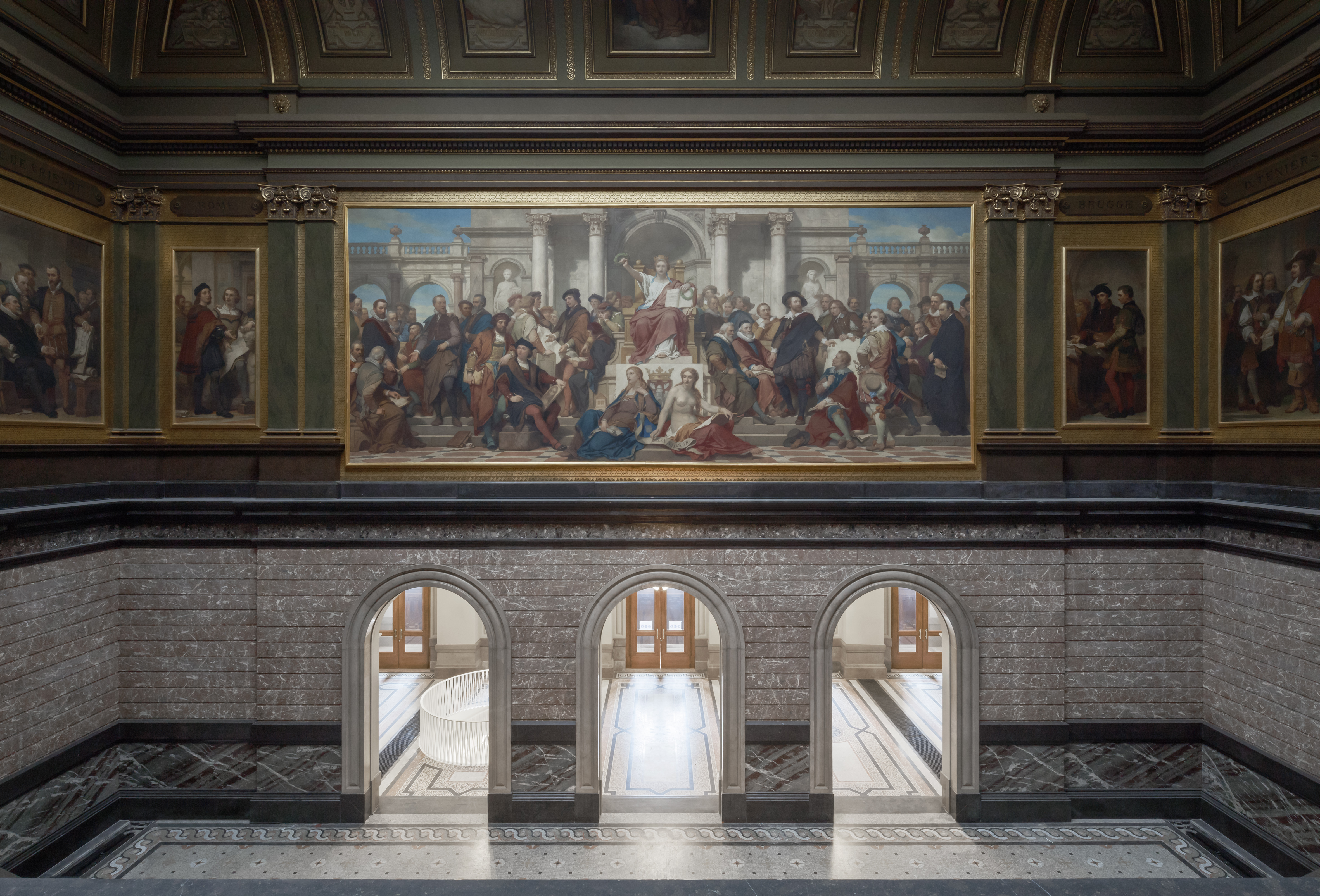
KMSKA | Photo: © Karin Borghouts
Rubens and the KMSKA
But let’s come to the landlord to whom the KMSKA has reserved its elegant lounge. The Museum houses 27 paintings by Rubens and about 600 engravings that allow guests to follow the Flemish artist’s career, from the first period in Italy to the last years of his life. In the large room dedicated to him the Baptism of Christcommissioned by Duke Vincenzo Gonzaga for the Jesuit Church of Mantua, talks with The Adoration of the Magi, one of the flagships of the museum, the monumental panel that the artist painted in 1626 in just two weeks. The dromedary that peeks out in the work has been reproduced in the museum room in the form of a comfortable sofa, a fun idea designed especially for the little ones.
In 1794, during the great dispossession of works by the French, The Adoration of the Magi was partially cut to be moved to Paris and it is therefore a miracle that it can still be admired today in all its splendor.
The largest collection in the world of Ensor and Rik Wouters
Despite some taste in room 4, it is on the first floor of the new KMSKA that the skeletons, the grinning masks, the demons, with which Ensor translates the most typical aspects of the bourgeois world into satire, forcefully assault the viewer, overwhelming him in a whirlwind of sensations. . From the Carnaval de Binche to The baths of Ostendfrom the famous Intrigue to Skeletons fighting over a hanged manthe collection dedicated to Ensor, which alone is worth the trip to Antwerp, enchants with its grotesque vein that oscillates between irony and restlessness, in a sort of nightmare in which dream and reality merge.
In Large View over the Rooftops of Ostend the masks give way to a sky that threatens storm. Between the thick layers of paint and the delicate use of color, the painter represents the landscape he sees from his studio in the attic, while the gaze, from the city, sweeps over the small farms with red roofs in the polders.
Another powerful KMSKA workhorse is the Antwerp artist’s collection Rik Wouters, the largest in the world, donated in 1989 by Baron Ludo van Bogaert and his wife Marie-Louise Sheid. On the other hand, this new temple of art in the heart of the city could not miss the artist who created portraits, landscapes, still lifes with light at heart.
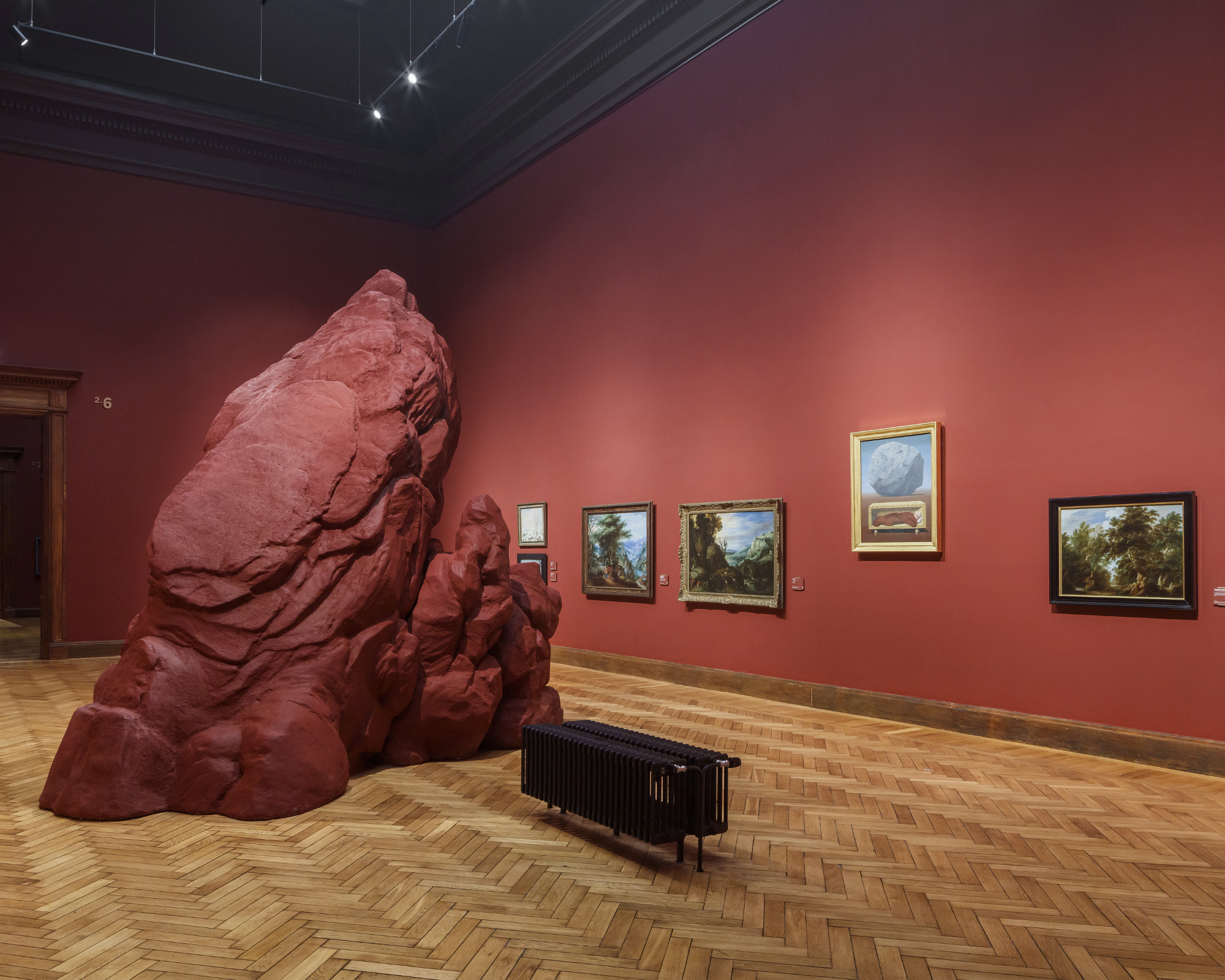
KMSKA, Outfitting | Photo: © Karin Borghouts
A bold staging
The unconventional choice of combinations, the calibrated restyling with which the museum has gradually acquired a new DNA, among the colors of the walls that change according to the room, from Pompeian red to olive green. We like that illuminating dialogue between ancient and modern, between the languages that intertwine, while painting leaves room for multimedia that literally invites you to enter the creations of the “old masters”. Thus the public is now invited to follow the movement of an enormous rotating red hand that hangs from above, now to immerse themselves in the rustle of feathers of the great masters, to scrutinize details, to capture the essence of painting. Speaking of multimedia, a small applause goes to Rubens’ virtual atelier, which relives in augmented reality, reconstructed on the basis of the sources, the fun (and interesting) apparatus of touch screens that helps the public to explore some works in the rooms, connecting them to the present.
An example? Just follow the in-depth study dedicated to The woman who irones “ by Rik Wouters to learn all the secrets of the perfect style.
Very useful is the museum’s app, which allows you to learn more, in multiple languages and in real time, about the works and their arrangement in the rooms.
The museum experience stimulates multiple senses. In the room “Sky” the artists shape the invisible in a triumph of messenger angels and extraterrestrial forces. The tools of Hans Memling’s angelic creatures come out of the work to become tangible tools on the walls.
In short, the museum’s objective of arousing the “Sentiment le plus Gracieux” in the course of a 360-degree experience seems to have been achieved.
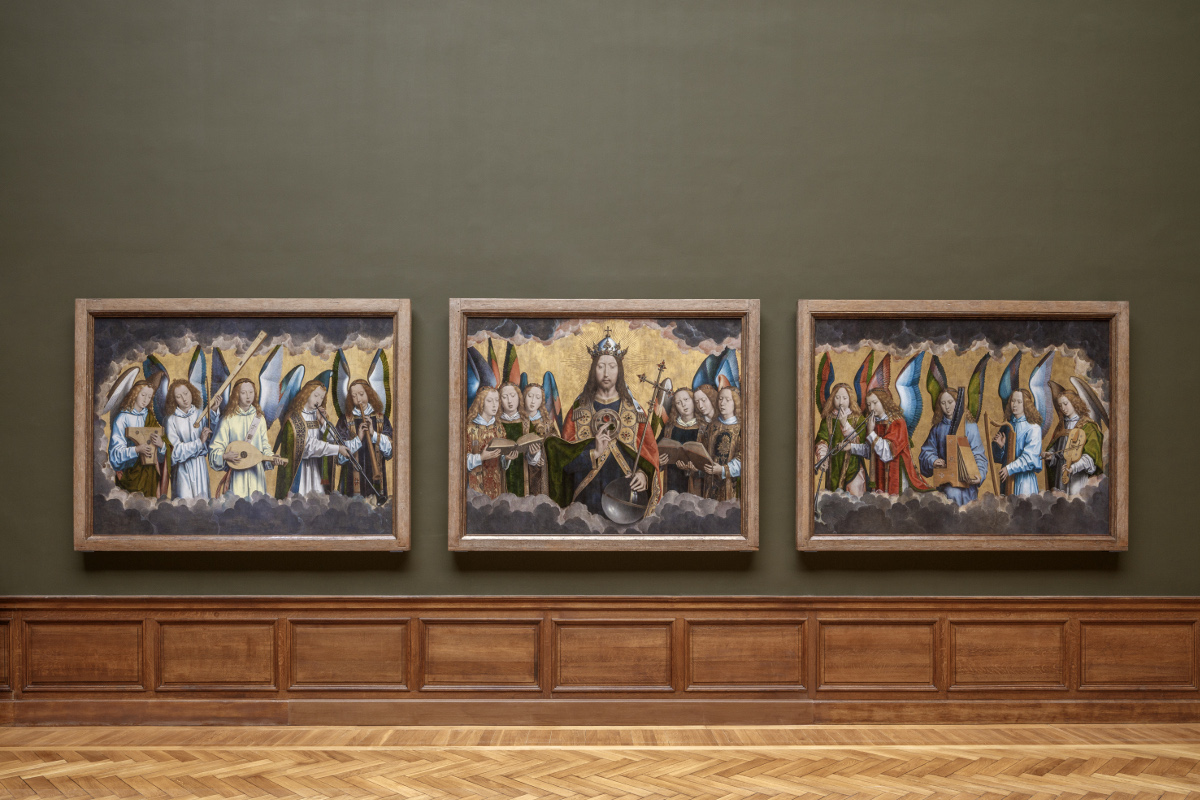
KMSKA, Sala Cielo set-up | Photo: © Karin Borghouts
A little bit of Italy
A little patriotism pushes you to rummage through the halls in search of Italian style. And here Jacopo Pesaro presented to St. Peter by Pope Alexander VIthe first known work of a Titian in his early twenties, or a Seated nude by Amedeo Modigliani, the Calvary by Antonello da Messina, the Orsini Polyptych by Simone Martini, a Space Concept by Lucio Fontana, Dance by Fausto Melotti and a luminous Tribute to the cosmonaut by Arnaldo Pomodoro.
But, beyond the tricolor pride, there are many other masterpieces that remain hooked to the eye, from Judith by Jan Massijs to the intriguing Santa barbara by Jan van Eych and more Cleopatra by Alaxandre Cabanel or the seductive Woman resting by Wouters, a monumental Dali and the fleeting beauty of Madame Recamier imprisoned in a coffin by Magritte.
A collection still in progress
The museum’s collection, which is still evolving, is the result of donations, bequests, acquisitions that took place over the years, starting from 1382 when the Guild of San Luca was active, which brought together painters of the caliber of Jan Brueghel. When this corporation was dissolved the art collection passed to the academy that David Teniers the Younger had founded in the meantime to offer a full course in science and plastic arts to young artists. On May 5, 1810, the creation of the Antwerp museum by Napoleon’s imperial decree, in 1815 the return by the French of a large number of looted works.
In 1841, the knight Florent van Ertborn bequeathed to the museum 144 works of art from the 14th to the 16th century, including the masterpiece of Jean Fouquet, Madonna surrounded by Seraphim and Cherubimauthentic masterpiece of the KAMSKA. Between one purchase and another, in 1875 the decision was made to build a new museum in the district of Zuid, which opened its doors on 11 August 1890. The rest is a story that challenges the two world wars, in an attempt (fortunately successful) to save the works in hatches specially built in the basement.

Jean Fouquet, Madonna surrounded by seraphs and cherubs, ca 1450, Oil on panel, 83.5 x 92 cm
A museum for everyone
“In rethinking the setting – explains one of the curators – we followed the criterion of quality, but not only. We thought about the artists’ stories we wanted to tell. In the thematic choice we wanted to take into account the fact that a part of our audience is made up not only of experts, but of people without an artistic background. We would like visitors without a prior knowledge of art to feel welcomed and at ease, as well as guests with a non-Christian background. Public attention, as we know, is limited. We have favored an attractive path that acts as a guide and allows you to discover and grasp the details that we believe are the most interesting “.
A restoration workshop open to visitors
In addition to a scientific library and an archive documenting the museum’s activity since 1816, a cabinet for the graphic arts, the KMSKA also houses its own restoration workshop overlooking the rooftops of Antwerp. Established in April 1999, the workshop, which initially focused on the restoration of paintings, now also deals with sculptures, frames and works on paper and will be open to the public, offering a glimpse into the restorers’ activities.
A little gem before leaving
During your walk at KMSKA you will come across a curious one Inn scene by the Dutch painter Adriaen van Ostade. The picture is definitely wrong. It is not an oversight of the curators, and you absolutely do not try to straighten it, even if you will be tempted.
Perhaps this unusual position will help you to better grasp a detail. And you fell even more in love with this jewel, a small island of water and light, with the pearl on the Scheldt.
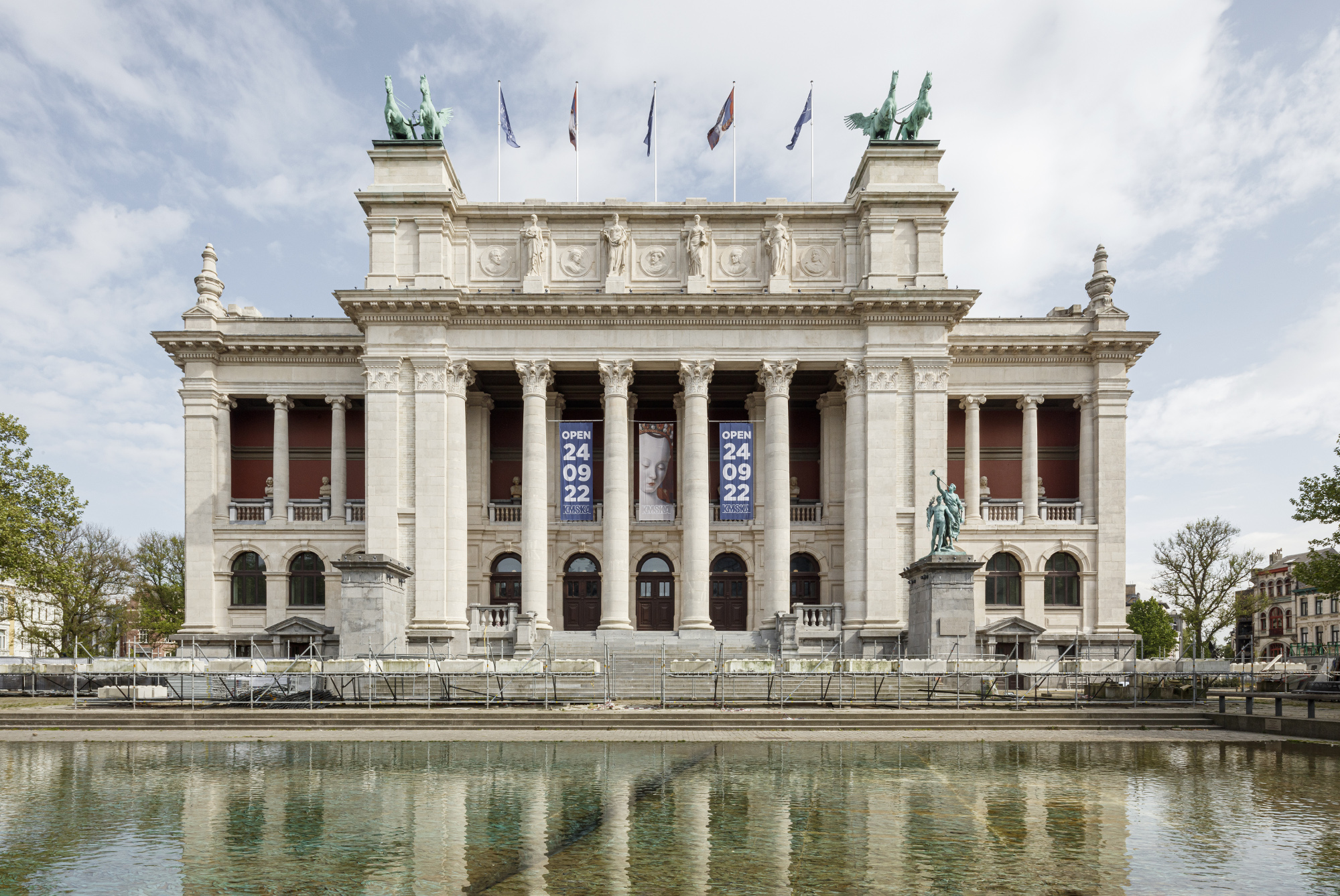
KMSKA | Photo: © Karin Borghouts

